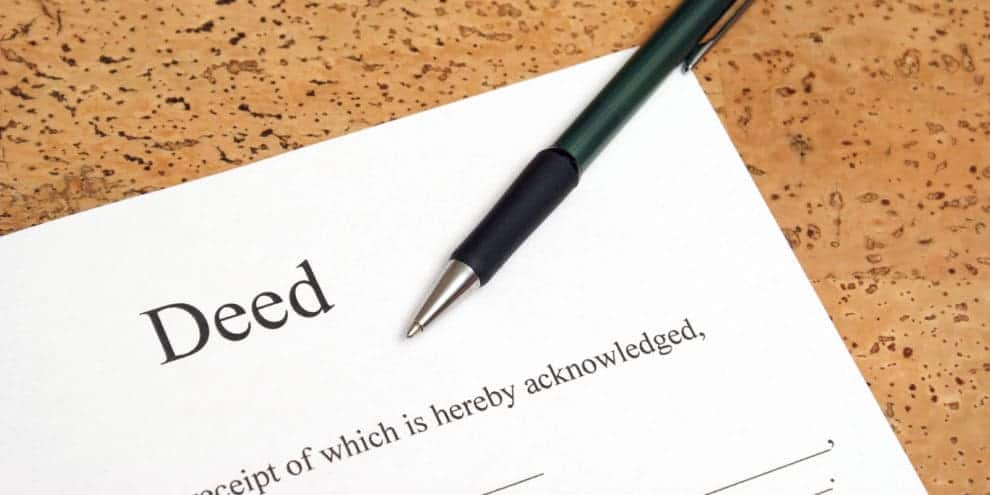Title to real property represents ownership of the bundle of rights in the land. Title also is evidence of ownership.
It is not uncommon, especially with larger tracts of land for sale, to find a seller that is advertising to sell with a deed that conveys the property with “exceptions to title.” What the seller means by “exception” may not be clear, even to the seller. It better be clear to the buyer.
From a buyer’s perspective, an exception can mean any encumbrance, reservation or limitation on the title or property.
An encumbrance is, simply put, some burden on the seller’s property. An encumbrance can be either 1) a lien, which is a monetary claim against the property (like a mortgage, federal income-tax lien, property tax, judgment or a bill for fixing the roof) or 2) something that affects the owner’s use of the physical property (like an access easement held by a neighbor or a conservation easement prohibiting development), a restriction (square-foot minimum for new construction) or an encroachment.
Some encumbrances, like liens, can and should be cleaned up by closing, but others, like an easement, will be come to the buyer because they run with the land.
When a buyer accepts an exception to title, he has accepted whatever has been withdrawn from the bundle of rights or whatever burden that exception might be imposing on the property. When a buyer buys with a specified exception to title, he has arguably waived a future challenge to the seller on that matter.
When a seller has a title insurance policy on the sale property, the policy will explain which exceptions are and are not covered. A buyer should ask for a copy of this list, often included as Schedule B. A buyer should ask his lawyer to identify exceptions that are basically harmless and those that are not. Title insurance excludes from coverage zoning ordinances, restrictive covenants, current taxes, easements and certain water rights.
Deed restrictions may also be called restrictive covenants, protective covenants, covenants of record, restrictions of record or title conditions. They are private agreements that the seller or his predecessors have entered into that run with the land. Some deed restrictions have time limits and renewal options. A right of first refusal that the seller holds or has sold to another party is a restriction and should be included in a deed. Restrictions should be a matter of record and noted in the deed of conveyance.
A reservation on the title, or a reservation of interest or profit, is usually some right in the property that a seller wants to keep. Common ones are retaining the right to cut timber for several years following the sale of timberland, hunting rights or the right to lease the hunting property for agriculture at a specified rate for a certain number of years.
Buyers need to be careful with mineral rights. Some properties have had surface rights separated from subsurface minerals. In turn, the mineral ownership may be separated into oil, natural gas at different depths, coal, coal-bed methane, hardrock minerals and clay…and each may be held or leased by different parties. Severance of minerals from the surface is a title exception.
The seller who owns his minerals may want to retain them and sell surface only. Or he may have leased the minerals, a lease that runs with the land. Mineral owners have rights to use the surface. A sale or lease of minerals should be recorded, but a blanket acceptance of exceptions may find the buyer agreeing to an undisclosed and unrecorded sale or lease of minerals.
An encroachment is an illegal extension of Party A’s property onto the property of Party B. Extensions can be a building, antenna, road, underground mine or fence line. An encroachment is a form of trespass.
Most often, an encroachment is not discovered in the deedwork of the parties. It is usually found when a deed-mapper drawing of boundaries on a topographical map or a surveyor in the field finds a discrepancy between deeded boundaries and those on the ground. An encroachment can be accidental or deliberate.
A buyer does not want to validate an encroachment on the seller’s property by waiving it in by accepting an exception to title that, if only implicitly, acknowledges the encroachment. If a seller is trying to sell with unspecified “all exceptions in title,” something’s fishy, and one guess is that the seller does not want to confront the smell of an encroachment.
Encroachments should be disclosed in a listing agreement and sales contract. A seller, however, can be unaware of an encroachment, such as a fence line that encloses five acres of his land, in which case it will not be disclosed. For that reason, it is a sensible idea for a land buyer to, at least, have a surveyor walk the boundaries with the deed’s calls (boundary description) in one hand and a deed-mapper drawing on a topo in the other to check for any misalignments on the ground.
In some circumstances, an encroachment may rise to the state’s standards of adverse possession or prescriptive easement. In that event, the encroaching party gets to own the encroachment or continue to use it legally. Courts can order encroachments to be terminated or damages recovered by the landowner on whom it falls.
Whenever a seller is offering land with “exceptions to title,” buyers should know exactly what the seller means. Acceptance of exceptions is, in a sense, buying “as is,” which may or may not be what the buyer wants to do. Buyers should involve a local real-estate lawyer whenever these words appear.
This content may not be used or reproduced in any manner whatsoever, in part or in whole, without written permission of LANDTHINK. Use of this content without permission is a violation of federal copyright law. The articles, posts, comments, opinions and information provided by LANDTHINK are for informational and research purposes only and DOES NOT substitute or coincide with the advice of an attorney, accountant, real estate broker or any other licensed real estate professional. LANDTHINK strongly advises visitors and readers to seek their own professional guidance and advice related to buying, investing in or selling real estate.










Thank you so much. We bought a home in Southern Pines and did all the inspections. Then is was survey time. The surveyor found encroachment by the seller and a deck and walkway encroaching on golf course.He pinned all areas of encroachment and the next day they were gone. He returned and remarked and the seller had nothing to say. We were going to just ask seller to move stairs of porch as there was only 4 inches before we were encroaching when stepping down.. He offered $1500 to move stairs of porch to non- encroaching side of deck and to remove brick walkway also encroaching and wanted a letter from us releasing him from all liabilities in future.
After reading your article, we are not accepting will cancel the offer. “A cloud on title” and we take all liabilities for the trees, irrigation pipes that are still encroaching. “Depreciated property” is the final issue. Thanks.
During an “AS-IS” sale, the seller is not obligated to tell the buyer the problems with the car. Although, If the buyer discovers that the seller tried to hide any issues, the seller has now committed a crime.